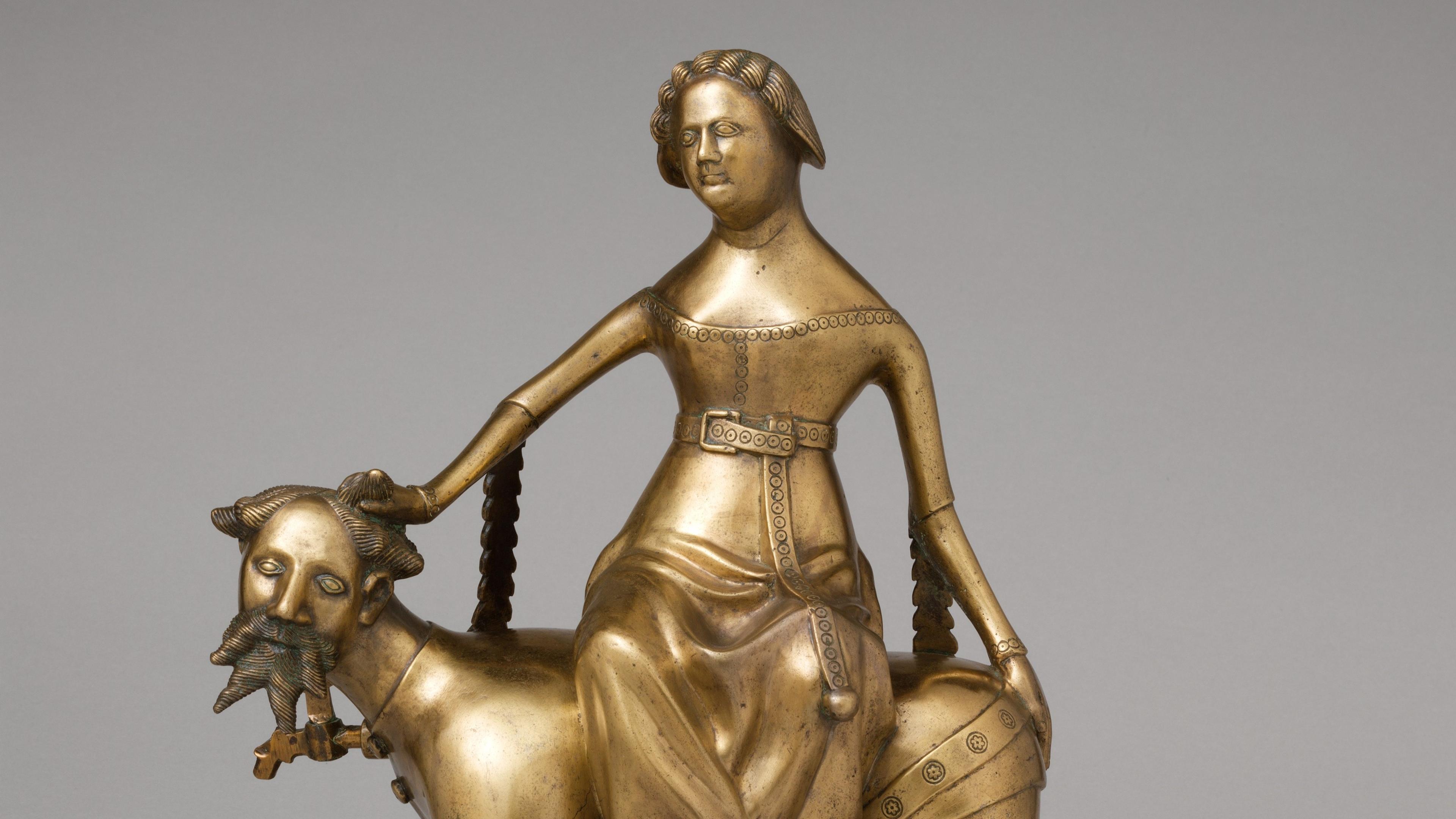(New York, October 16, 2025)—A new exhibition opening at The Met Cloisters this fall will explore the often-overlooked themes of sexuality and gender in art from the medieval past, a time when most artistic production served religious purposes. Featuring more than 50 works—from gold jewelry and ivory sculptures to stained glass, illuminated manuscripts, woven textiles, and more—Spectrum of Desire: Love, Sex, and Gender in the Middle Ages will showcase the rich visual language of longing in the arts of western Europe from the 13th to the 15th century, drawing from both The Met’s extraordinary collection and exceptional loans from lenders.
The exhibition is made possible by the Michel David-Weill Fund and Kathryn A. Ploss.
“Firmly grounded in decades of scholarship, Spectrum of Desire illuminates the complex ways that people in medieval Europe imagined how to live and love,” said Max Hollein, The Met’s Marina Kellen French Director and Chief Executive Officer. “The exceptionally spectacular works of art featured in the exhibition tell us how desire and the visual arts were deeply entwined in ways that are incredibly powerful—and sometimes quite surprising.”
From the 13th through 15th century, Western Europe witnessed profound changes in the ways that sex, ideas of the family, and relationships were regulated, yet it was also a time of surprising openness: ideas about the power of erotic unions, gender expression, and identity were frequently in flux. This exhibition examines the broad spectrum of desires in the Middle Ages and shows how art shaped these experiences and feelings. Among the objects the exhibition showcases are those related to medieval marriage and courtship, including exquisitely carved ivory writing tablets—sometimes depicting risqué themes—which were likely used for the exchange of messages between lovers. Other works present complex views of gender and identity, such as a remarkable painting of Saint Jerome in a woman’s dress, or allude to same-sex desire, as in a delicate boxwood carving of Eve and a female-headed serpent. Exceptional loans include the Rothschild Canticles, a rarely displayed devotional manuscript from Yale University’s Beinecke Library that depicts some of the earliest images of Christian mystical union.
Melanie Holcomb, The Met’s Curator and Manager of Collection Strategy, Department of Medieval Art and The Cloisters, said: “Though we might think of the Middle Ages as a repressive era, this exhibition shows that artists explored ideas of sex and gender in fascinating and visually beautiful ways.”
Nancy Thebaut, Exhibition Co-Curator and Associate Professor in the History of Art, University of Oxford, said: “Spectrum of Desire builds upon decades of work by scholars who have pioneered and refined the study of gender and sexuality in medieval Europe. We are excited to share their important work, as well as our own findings, with visitors.”
Credits and Related Content
Spectrum of Desire: Love, Sex, and Gender in the Middle Ages is curated by Melanie Holcomb, Curator and Manager of Collection Strategy, Department of Medieval Art and The Cloisters, The Met, and Nancy Thebaut, Associate Professor in the History of Art, University of Oxford.
The exhibition will be accompanied by a fully illustrated catalogue.
The catalogue is made possible by the Michel David-Weill Fund and Nellie and Robert Gipson.
Additional support is provided by Wendy A. Stein and Bart Friedman.
The Met will host a variety of exhibition-related educational and public programs—including Met Expert Talks, Open Studios, Studio Workshops, online art history study groups, community programs, a new Cloisters Late Nights program, and more—that will give visitors a unique opportunity to experience the exhibition and The Met Cloisters.
###
October 16, 2025
Photo: Aquamanile in the Form of Phyllis and Aristotle, Netherlandish, late 14th or early 15th century. Copper alloy, 12 ¾ x 7 x 15½ in. (32.5 x 17.9 x 39.3 cm). The Metropolitan Museum of Art, New York, Robert Lehman Collection, 1975 (1975.1.1416)
